
Collecting data for the CSRD: start your preparation!
The Corporate Sustainability Reporting Directive (CSRD) is reshaping how businesses approach sustainability reporting. Listed companies are already preparing data for 2024, while large organizations must comply by 2025. Medium-sized listed companies will follow suit in 2027, making it essential to start planning now.
Many companies’ reporting obligations under the Corporate Sustainability Reporting Directive (CSRD) are fast approaching. Listed companies are already busy collecting data for the financial year 2024, while large companies have to start working from 2025. Time is also running out for medium-sized listed companies, which will have reporting obligations from 2027.
Tip: Want to know more about reporting for the CSRD? Then check out the handy roadmap to prepare your organisation properly!
But even if your company does not fall under the CSRD obligation, you will have to deal with the obligation. This is because companies that do have to report are obliged to include data from supply chain partners and suppliers in their reporting. This means that you too may be asked to provide information. How do you ensure that your company is ready for the CSRD and is stronger in the chain? It starts with understanding where you find important data and knowing how to bring it together.
Sustainability starts with data from different sources
A complete sustainability report includes data from different systems. An ERP system, such as our solution 4PS Construct, plays a central role in this. Yet an ERP is by no means the only data source you need! You build a sustainability report from data from, for instance, HR systems:
- HR systems provide insight into sustainability initiatives, such as carbon reduction programmes and employee engagement.
- IoT platforms provide real-time data on fuel consumption, emissions and running time on site via sensors and telemetry on machines.
- CRM (Customer Relationship Management) shows whether tenders and projects meet sustainability criteria.
- Quality and risk management software monitors suppliers’ compliance with standards and certifications.
- Financial administration captures data on energy consumption and CO₂ impact, e.g. from energy bills.
As you can see, no single application contains all the data you need for sustainability reporting. Therefore, the key to a complete report is to bring together data from these different systems.
The role of an ERP in sustainability reporting
An ERP gives organisations insight into the full financial picture within all primary business processes, from tender to aftercare. This also makes it an essential data source for sustainability reporting. Wondering how an ERP contributes? Some examples:
- Material use: Record the carbon footprint of materials and link this data to specific projects.
- Supplier certifications: Collect sustainability and environmental certificates from suppliers and use information when making tenders.
- Emissions per project: Combine data on machine use, transport and energy consumption to measure your impact per construction project.
But the real power, of course, lies in data integration. For instance, combine emissions data from the ERP with real-time machine data from IoT platforms and sustainability targets from your HR systems.
4PS Construct: basis for smart data and sustainability
Because we build 4PS Construct based on Microsoft Business Central, companies benefit from all the new functionalities around sustainability introduced by Microsoft. For example, it is already possible now to:
- Report Scope 1, 2 and 3 emissions: Combine direct and indirect emissions from different data sources.
- Automate data: Reduce manual work by reading data directly from integrated systems.
- Create real-time insights: Combine available data into clear reports and dashboards or export them for analysis to Excel or other BI tools.
Are you ready for the future?
With 4PS Construct, construction, civil engineering and installation companies lay the foundations for efficient sustainability reporting and future-proof business operations. Enriching data from 4PS Construct with data from other systems gives you complete and detailed insight into your sustainability impact. This way, you will not only be well prepared for the upcoming obligations, but you will also stay ahead in the construction industry!
Are you curious how our solution, 4PS Construct, helps organisations better use data and achieve sustainability goals? Then contact us for a no-obligation consultation or demo! Or read our white paper ‘Sustainable Construction: The Role of Emerging Technologies’ in which we show how technology helps you achieve your sustainability goals.
-
Share:

Paul Broderick | Paul has developed a keen eye for seeing specific customer requirements and recommending solutions to deliver business benefits and returns-on-investment. In the last three years Paul has focused this experience and knowledge specifically on the Construction industry, where digitisation is now the hot topic in IT, which has evolved and matured to become most relevant in today’s construction industry.
